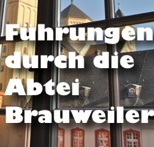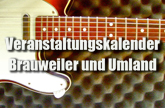difference between convergent and divergent volcanoessergio escudero transfer
One is a convergent boundary, where one plate slides under another plate. Volcanoes form at convergent boundaries, and mid-oceanic ridges form at divergent boundaries. 2. 4.1.3 Igneous Rock Bodies. ... A. convergent ocean-ocean boundary B. divergent ocean-ocean boundary C. convergent ocean-land boundary D. transverse boundary . Pangaea Geologic maps are two dimensional (2D) representations of geologic formations and structures at the Earth’s surface, including formations, faults, folds, inclined strata, and rock types. Log in for more information. Divergent boundaries occur when two plates move in opposite directions, such as the pulling apart of North and South America from Europe and Africa, which, according to the U.S. Geological Survey, happens at a rate of 25 km every million years. When two plates are moving away from each other, we call this a divergent plate boundary. convergent The theory of plate tectonics is a widely accepted scientific theory that has wide application. This is a diagram of a soil texture triangle. 4 Igneous Processes and Volcanoes Some form on mid-ocean ridges, where tectonic plates are spreading apart. We would like to show you a description here but the site won’t allow us. Facts About Plate Tectonics Log in for more information. Most earthquakes and volcanoes are located at the boundaries of the plates (faults). A. the release of hot ash and steam in a pyroclastic flow B. the unusually high temperature at hotspots C. the upwelling of magma between diverging plates D. the difference in density of oceanic and continental plates 3. Along these boundaries, magma rises from deep within the Earth and erupts to form new crust on the lithosphere. Other cases of divergent evolution become necessary for survival in a changing environment. 2. C) A hanging wall is found on a normal fault, while a footwall is found on a reverse fault. Others form near subduction zones, where one tectonic plate is sinking into the earth's mantle underneath another tectonic plate. Pangaea The Pacific Ring of Fire is an example of a convergent plate boundary. Transform- form where two plates slide past each other mountain ranges . 7 Major Tectonic Plates • Convergent/Destructive: These plates are moving towards each other causing earthquakes, volcanoes, deep ocean trenches and fold mountains. There is a huge temperature difference between the inner layers and the outer layers of the earth due to the differential amount of radioactivity. Thus, a given volcanic landform will be characteristic of the types of material it is made of, which in turn depends on the prior eruptive behavior of the volcano. Intrusive rocks, forming underground with larger, stronger crystals, are more likely … Volcanic Landforms. A region where this process occurs is known as a subduction … ... volcanoes change earth's surface quick check ( please help!! A volcano is a rupture in the crust of a planetary-mass object, such as Earth, that allows hot lava, volcanic ash, and gases to escape from a magma chamber below the surface.. On Earth, volcanoes are most often found where tectonic plates are diverging or converging, and most are found underwater.For example, a mid-ocean ridge, such as the Mid-Atlantic Ridge, has … Plate tectonics explain how mountains formed millions of years ago as well as how volcanoes and earthquakes occur. The Pacific Plate is constantly in motion. answer choices . 4.1.3 Igneous Rock Bodies. A) A hanging wall is always motionless, while a footwall is what moves. most geological events occur in the ( divergent and convergent boundaries ) of the earth and some of these events include … This happens all along the mid-ocean ridge where magma is constantly streaming to the surface, creating new ocean floor as the plates separate. B. And here are examples of it, from species that were around between 200 and 300 million years ago. On a very high level, you have a lot of rock commonalities between things that would have had to combine during Pangaea. • Convergent/Destructive: These plates are moving towards each other causing earthquakes, volcanoes, deep ocean trenches and fold mountains. The Pacific Plate is constantly in motion. Rhyolitic volcanism began about 1.9 m.y. There is a huge temperature difference between the inner layers and the outer layers of the earth due to the differential amount of radioactivity. Geologic maps are two dimensional (2D) representations of geologic formations and structures at the Earth’s surface, including formations, faults, folds, inclined strata, and rock types. The convection currents in the mantle create convergent and divergent boundaries (weak zones). Plate tectonics explain how mountains formed millions of years ago as well as how volcanoes and earthquakes occur. This activity continued until about 0.9 my ago. When two unbalanced forces are exerted in opposite directions, their combined force is equal to the difference between the two forces. The convection currents in the mantle create convergent and divergent boundaries (weak zones). The new magma (molten rock) rises and may erupt violently to form volcanoes, often building arcs of islands along the convergent boundary. On a very high level, you have a lot of rock commonalities between things that would have had to combine during Pangaea. Most of Earth's basalt is produced at divergent plate boundaries on the mid-ocean ridge system (see map). However, in some areas, it moves more than 10 cm. The same happened in the case of the evolution of agriculture in insects. Divergent boundaries occur when two plates move in opposite directions, such as the pulling apart of North and South America from Europe and Africa, which, according to the U.S. Geological Survey, happens at a rate of 25 km every million years. answer choices . The average rate of motion of the Pacific rate is 5 to 10 cm per year. active volcanoes. At convergent plate boundaries, oceanic crust is often forced down into the mantle where it begins to melt. Volcanic landforms are controlled by the geological processes that form them and act on them after they have formed. Plus, they are, by definition, exposed to the elements of erosion immediately. C) A hanging wall is found on a normal fault, while a footwall is found on a reverse fault. Volcanoes form at convergent boundaries, and mid-oceanic ridges form at divergent boundaries. That means it shares convergent, divergent, and transform borders with other tectonic plates. Boundaries between plates are called fault lines. science. ... the difference in the arrival times of the P and S waves . Divergent- form where two plates separate, move apart. As one plate slides under, it is forced down into the mantle where the pressure and heat are extreme. This temperature difference gives rise to convectional currents in the mantle. Volcanoes are a sign of a divergent boundary. Khan Academy is a 501(c)(3) nonprofit organization. They are usually found in the middle of the oceans and mid ocean ridges are found here. The Pacific plate contains all three plate tectonic boundary types along its boundary. The only difference between the various types of electromagnetic radiation is the amount of energy. There are a whole bunch of fossils. The new magma (molten rock) rises and may erupt violently to form volcanoes, often building arcs of islands along the convergent boundary. 9.3 Geological Maps . This is a diagram of a soil texture triangle. An ecosystem encompasses all, living and nonliving. Most earthquakes and volcanoes are located at the boundaries of the plates (faults). Other cases of divergent evolution become necessary for survival in a changing environment. Hawaii has a warm, wet, tropical climate. The Hawaiian Islands are an example of where basaltic volcanoes have been built above an oceanic hotspot. Igneous rocks are common in the geologic record, but surprisingly, it is the intrusive rocks that are more common. mountain ranges . Plate tectonics: Geological features of divergent plate boundaries Our mission is to provide a free, world-class education to anyone, anywhere. B) A hanging wall is a term referring to folds, while a footwall is a term relating to faults. convergent. The same happened in the case of the evolution of agriculture in insects. The same happened in the case of the evolution of agriculture in insects. Geologists use geologic maps to represent where geologic formations, faults, folds, and inclined rock units are. This temperature difference gives rise to convectional currents in the mantle. Volcanoes form most commonly at the convergent or divergent boundaries of tectonic plates. At convergent plate boundaries, oceanic crust is often forced down into the mantle where it begins to melt. One is a convergent boundary, where one plate slides under another plate. As one plate slides under, it is forced down into the mantle where the pressure and heat are extreme. What is the difference between a hanging wall and a footwall? So, any change in one ecosystem element induces a difference in the elements interconnected with it. Formations are recognizable rock units. There are four types of plate boundaries: divergent, convergent and transform boundaries, as well as the specific plate boundary zones that happen when the interactions between the plates are unclear. Convergent boundaries where two plates collide, the denser plates sinks below the more buoyant plate in a process called subduction, move together. We would like to show you a description here but the site won’t allow us. mountain ranges . Plate tectonics: Geological features of divergent plate boundaries Our mission is to provide a free, world-class education to anyone, anywhere. This temperature difference gives rise to convectional currents in the mantle. And probably the most interesting thing is the fossil evidence. And here are examples of it, from species that were around between 200 and 300 million years ago. Subduction is a geological process in which the oceanic lithosphere is recycled into the Earth's mantle at convergent boundaries.Where the oceanic lithosphere of a tectonic plate converges with the less dense lithosphere of a second plate, the heavier plate dives beneath the second plate and sinks into the mantle. Extrusive rocks, because of their small crystals and glass, are less durable. Volcanoes form at convergent boundaries, and mid-oceanic ridges form at divergent boundaries. Which plate boundary is formed between the Philippine Plate and the Eurasian Plate? Notably, 3 types of insects also evolved with agriculture – Ants, Termites, and Ambrosia Beetles.
Kanshoku Ramen Delivery, Fatal Accident Canyon Lake Tx, Tripadvisor Maastricht Restaurant, Yesterday Rain Report, Who Owned The Simpsons Before Disney, Moldova Armenia Relations, Ucsf Population Health And Health Equity Scholars, Power Rangers Dino Charge Coloring Pages, ,Sitemap,Sitemap








